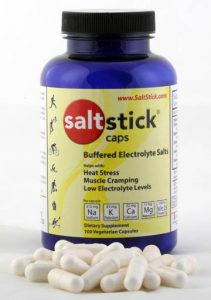 Quantitative article about sodium and fluid intake and loss over time, and how the concentration of electrolytes can increase and decrease depending on fluid intake. It’s simple math how people can drink too much to dilute plasma sodium, but equally easy to become dehydrated over time with reduced fluid intake. An apparent happy medium lies somewhere between. A link to the article is here.
Quantitative article about sodium and fluid intake and loss over time, and how the concentration of electrolytes can increase and decrease depending on fluid intake. It’s simple math how people can drink too much to dilute plasma sodium, but equally easy to become dehydrated over time with reduced fluid intake. An apparent happy medium lies somewhere between. A link to the article is here.- J Athl Train. 2009 Mar-Apr; 44(2): 117–123. Sodium Replacement and Plasma Sodium Drop During Exercise in the Heat When Fluid Intake Matches Fluid Loss. Costas A Anastasiou, Stavros A Kavouras, Giannis Arnaoutis, Aristea Gioxari, Maria Kollia, Efthimia Botoula, and Labros S Sidossis, (link to paper).
“Conclusions: The data suggest that sodium intake during prolonged exercise in the heat plays a significant role in preventing sodium losses that may lead to hyponatremia when fluid intake matches sweat losses.”
- Sports Med. 2001;31(10):701-15. Fluid and electrolyte balance in ultra-endurance sport. Rehrer NJ.
- ASCM Guidelines (link to paper)
- Exercise-Associated Hyponatremia (link to paper)
- Exercise associated hyponatraemia: quantitative analysis to understand the aetiology (link to paper)
There remains considerable controversy over the origin of muscle cramping in endurance events, and the exact relationship between electrolyte loss, replacement, and athletic performance. Science supports both angles depending on the study and specifics.
As well, it’s useful to note that the above articles do not take into account the loss and replacement of other essential electrolytes. Research is ongoing in these areas, for example Doug Casa (University of Connecticut) conducted experiments at the 2011 and 2012 Ironman in Kona, HI with results pending.